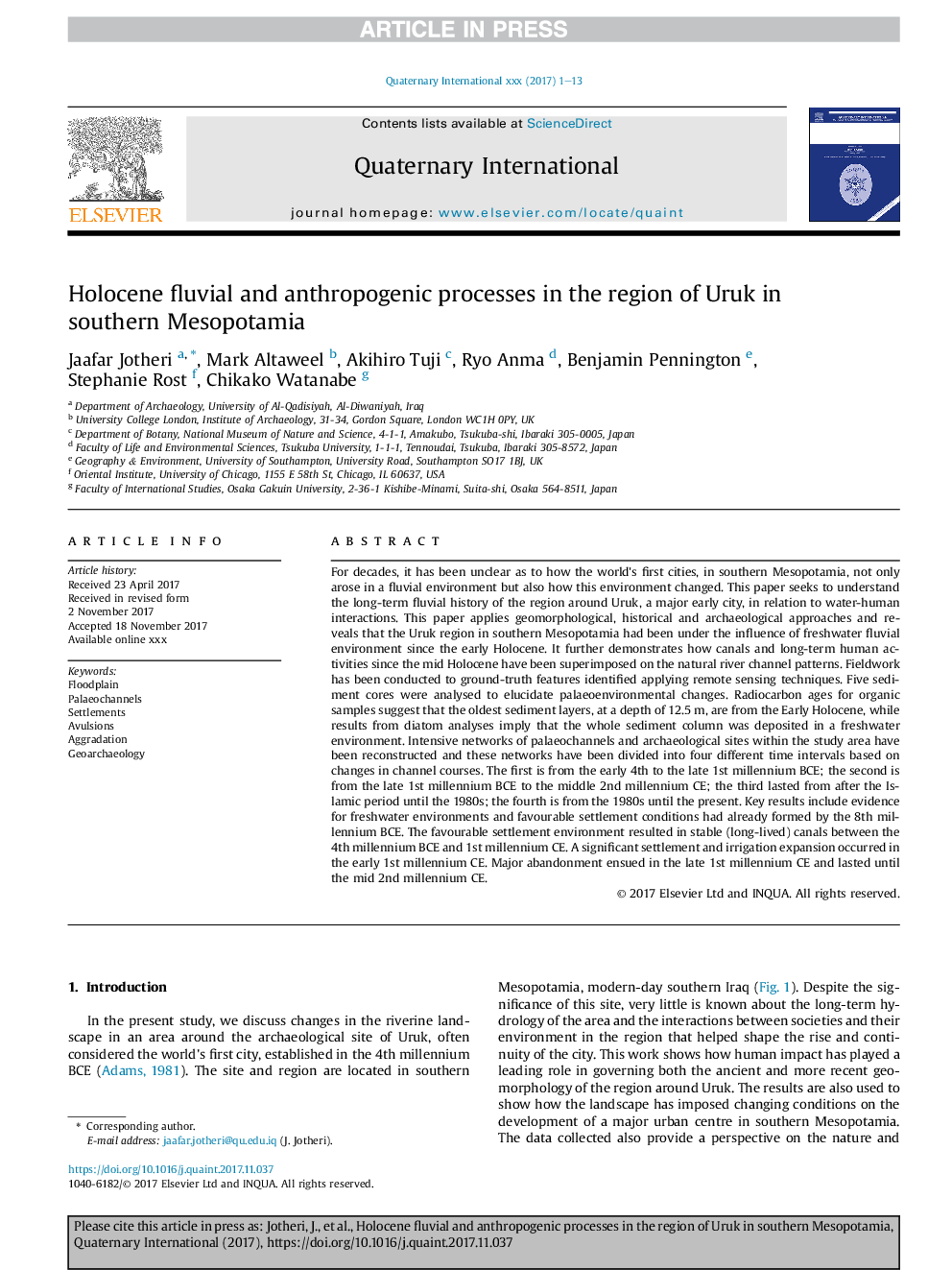| کد مقاله | کد نشریه | سال انتشار | مقاله انگلیسی | نسخه تمام متن |
|---|---|---|---|---|
| 7449108 | 1484028 | 2018 | 13 صفحه PDF | دانلود رایگان |
عنوان انگلیسی مقاله ISI
Holocene fluvial and anthropogenic processes in the region of Uruk in southern Mesopotamia
ترجمه فارسی عنوان
فرایندهای هولوسن فلوئالی و انسان شناسی در منطقه اروک در جنوب بین النهرین
دانلود مقاله + سفارش ترجمه
دانلود مقاله ISI انگلیسی
رایگان برای ایرانیان
کلمات کلیدی
موضوعات مرتبط
مهندسی و علوم پایه
علوم زمین و سیارات
زمین شناسی
چکیده انگلیسی
For decades, it has been unclear as to how the world's first cities, in southern Mesopotamia, not only arose in a fluvial environment but also how this environment changed. This paper seeks to understand the long-term fluvial history of the region around Uruk, a major early city, in relation to water-human interactions. This paper applies geomorphological, historical and archaeological approaches and reveals that the Uruk region in southern Mesopotamia had been under the influence of freshwater fluvial environment since the early Holocene. It further demonstrates how canals and long-term human activities since the mid Holocene have been superimposed on the natural river channel patterns. Fieldwork has been conducted to ground-truth features identified applying remote sensing techniques. Five sediment cores were analysed to elucidate palaeoenvironmental changes. Radiocarbon ages for organic samples suggest that the oldest sediment layers, at a depth of 12.5Â m, are from the Early Holocene, while results from diatom analyses imply that the whole sediment column was deposited in a freshwater environment. Intensive networks of palaeochannels and archaeological sites within the study area have been reconstructed and these networks have been divided into four different time intervals based on changes in channel courses. The first is from the early 4th to the late 1st millennium BCE; the second is from the late 1st millennium BCE to the middle 2nd millennium CE; the third lasted from after the Islamic period until the 1980s; the fourth is from the 1980s until the present. Key results include evidence for freshwater environments and favourable settlement conditions had already formed by the 8th millennium BCE. The favourable settlement environment resulted in stable (long-lived) canals between the 4th millennium BCE and 1st millennium CE. A significant settlement and irrigation expansion occurred in the early 1st millennium CE. Major abandonment ensued in the late 1st millennium CE and lasted until the mid 2nd millennium CE.
ناشر
Database: Elsevier - ScienceDirect (ساینس دایرکت)
Journal: Quaternary International - Volume 483, 30 July 2018, Pages 57-69
Journal: Quaternary International - Volume 483, 30 July 2018, Pages 57-69
نویسندگان
Jaafar Jotheri, Mark Altaweel, Akihiro Tuji, Ryo Anma, Benjamin Pennington, Stephanie Rost, Chikako Watanabe,
